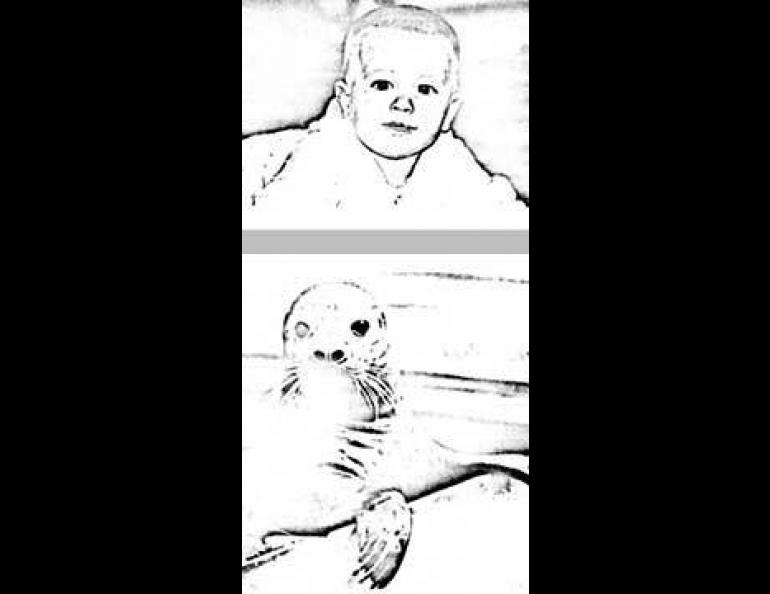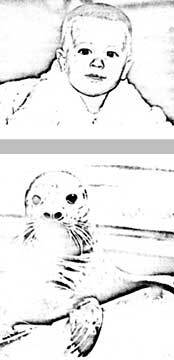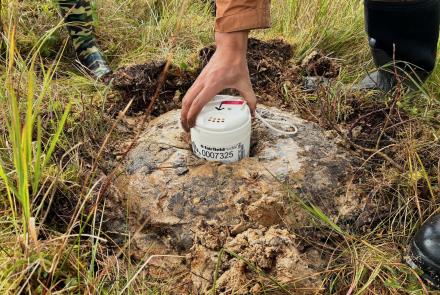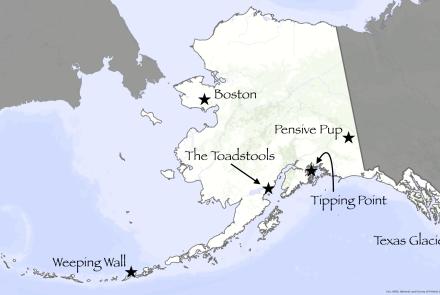
The Newborn Mammal and the Diving Seal
While man is incapable of deep and prolonged dives, many species of marine mammals found in Alaskan waters perform such feats regularly and with no ill effects. Even a pearl diver or other well-trained man can remain submerged for only a few minutes, but the common harbor seal can remain active underwater for as long as 20 minutes. Clearly, the diving marine mammal has some built in mechanism which allows it to continue to operate when the oxygen supply is cut off. Without such a special ability, a mammal builds up excess carbon dioxide in the blood and may undergo a lapse into suspended animation.
Compared to non-diving mammals, one diver, the seal, has a large supply of blood, a greater concentration of the oxygen-carrying pigment in the blood, and a network of arteries with very elastic walls that permit blood pressure to be maintained more easily. At the onset of a dive, the seal displays a pattern of reflexes known collectively as the diving response. This response entails a profound slowing of the heartbeat frequency and a near-total clamping off of the blood supply to the muscles, kidneys and viscera. The only tissues to which the blood supply is maintained are those of the brain, lungs and the heart itself.
While diving, the animal is in essence divided into two distinct compartments: one receiving blood with a diminishing content of oxygen and the other receiving virtually no blood or oxygen. Those tissues deprived of blood still function to some degree and are not damaged by the asphyxiation of the dive.
The marine divers are not the only mammals in which selective distribution of the arterial blood occurs. Indeed, every mammal at the time of birth becomes asphyxiated, sometimes severely. At birth, the fetus emerges from the bathing fluid of the sac surrounding it, and it loses its mother's circulation via the umbilical cord. The difficulty and the duration of the birth are highly variable. If the young mammal goes without oxygen (remains asphyxic) for too long, the oxygen content of the blood becomes inadequate to satisfy the demands of the brain, and permanent cerebral damage may then occur.
Brain damage occurs all too frequently during human childbirth. Perhaps by learning more of how diving mammals can tolerate repeated long-term asphyxia, we can find ways to lessen the damage of slow births.
We do know that as mammals are born, there is, as in the adult diving seal, a division of the body tissues into those receiving a blood supply and those not. Interestingly, all mammals, even the seal, lose this response to asphyxia during the days or weeks after birth; but in the seal and other divers, the response develops again later.
For years, we have been trying to understand better how the body chemistry of mammals adapts to the lack of oxygen at birth or during long dives. Our work follows along the lines evolved over four decades by the well-known Alaskan scientist, Laurence Irving. At the Institute of Arctic Biology, we work with harbor seals that exhibit the diving response and certain other mammals that do not. We look mainly at how different tissues operate in the absence of oxygen. One aspect of this work is the measurement of the activities of enzymes that produce energy for tissue function.
In the adult seal, those enzymic sequences that function in the absence of oxygen to produce energy are much more active in the tissues that receive blood during the dive than in those that do not receive blood. Further, the enzymes in the blood-starved seal tissues are far less active than in the corresponding tissues of non-divers. Somehow those tissues that are without circulating blood are able to stretch out the time over which their limited energy stores can be utilized. Tissues in the newborn mammal also seem to have this ability to slow down the rate of using available energy.
Birth is a one-time experience that in the fetus requires the ability to withstand conditions of low oxygen availability. To avoid permanent damage to critical tissues, the fetus sends blood to the most important places: brain, lungs and, of course, heart. But unlike the adult diver, the newborn mammal has not evolved a distribution of enzyme activity that allows it to undergo prolonged asphyxia again and again. So while the fetus is prepared for the oxygen lack during birth, its emergence from the uterus must not be delayed if damage from lack of oxygen is to be avoided.




